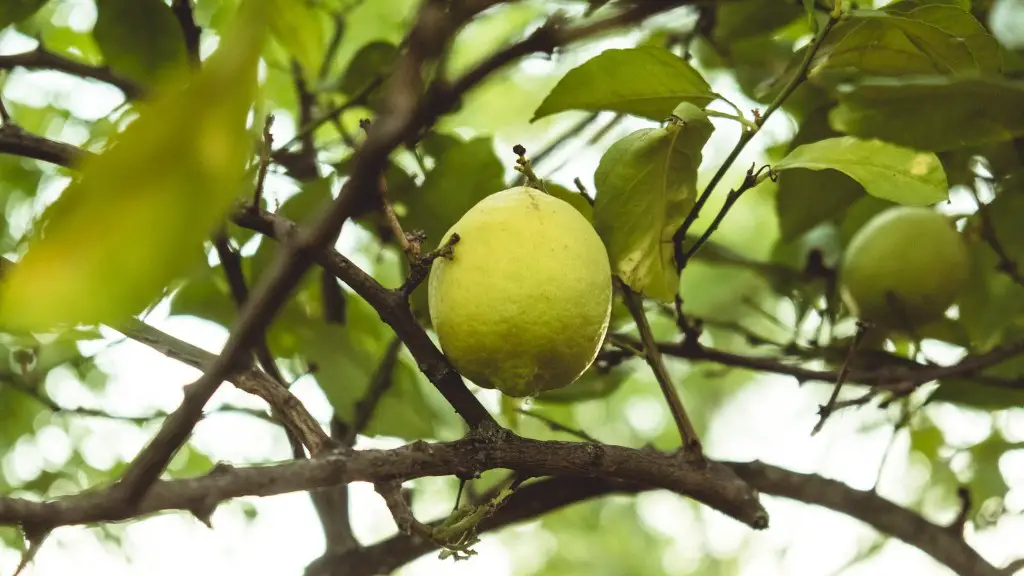Replanting a lemon tree is not always necessary, however there are some situations when it becomes a necessity. One of the determining factors for replanting is the age of the tree. When it is two years old, it’s a good idea to replant it, as this gives it the best chance for good growth. Another indication that a replanting is necessary is when a tree is getting straggly, with weak growth and overcrowded branches. An old and unproductive tree may also need to be replanted once it stops bearing fruit. There are some signs to be aware of that can indicate that a replanting is needed.
Soil Conditions
The soil can be a determining factor as well when it comes to deciding when to replant a lemon tree. The ideal soil for this type of tree is a mixture of sand, compost, and manure. If the tree is planted in heavy clay soil and not getting enough drainage, then it is important to replant it. This will ensure that the tree will have ideal drainage and air pockets, so its roots have what they need to thrive. If the tree is planted too deeply, it will not be able to acquire the necessary amount of water and nutrients, and replanting will be necessary for the best results.
Location Change
If the climate of the area the tree is planted in changes and the temperatures become too hot or too cold for lemon tree, replanting the tree in a more suitable location is necessary. Unless the tree is in a greenhouse, extreme temperatures will damage it and prevent it from growing properly. If the tree is planted in a spot that does not receive enough sunlight, relocating it to a place that does is a great idea.
Transplant Shock
Transplant shock is something to be aware of when it comes to replanting a lemon tree. This is a condition when, due to the replanting, the tree stops producing fruit, has stunted growth, or experiences leaf drop. This can be minimized or prevented by taking proper steps when replanting. During transplanting, the root system of the tree should be handled as little as possible and kept intact. Also, the tree should be watered immediately after replanting and for a few weeks afterwards.
Diseases and Insects
If there is an infestation of diseases or insects that have taken over the tree, then replanting is necessary to get rid of them. If the tree’s leaves have yellowed and defoliated, then this could be a sign that they are present. This situation calls for replanting the tree in fresh soil, so that it can start to thrive once again. If the disease or insect infestation is too severe, then the tree should be destroyed so that it does not spread to other plants.
Potential Issues When Not Replanted
If a lemon tree is not replanted when it ought to be, then this can result in a poor city, crooked branches, and weak growth. It may also fail to bear fruit properly. The tree can also become unmanageable and get too big for the space that was allocated for it. Therefore, it’s important to identify when replanting is needed and act accordingly.
Proper Care for Existing Trees
Replanting a lemon tree is a big job and one that should be done carefully. This can be avoided, however, by providing the existing tree with proper care. It is important to prune it regularly, fertilize it during the growing season, and keep an eye on the soil conditions. If dealt with accordingly, a lemon tree should give years of enjoyment and be productive.
Planting Techniques
When replanting a lemon tree, the correct techniques must be used to ensure that the tree takes root and flourishes. Before planting, the soil should be turned and mixed with organic matter such as compost to increase the water and nutrient absorption. The hole dug should be twice the width of the pot and no deeper. Any roots that are too long should be pruned. It is also necessary to make sure that the tree is kept moist and mulch is applied to the soil to keep the moisture in for a longer period.
Fungicide Treatment
Fungicides can help lessen the impact of fungal diseases that may affect a lemon tree. It’s important to note that fungailes are toxic and should not be used without consult from an experienced individual. There are a few things that can be done to reduce the chances of an infection. These include ensuring that the tree is properly pruned, mulching around the trunk, and not watering over the tree as this can spread the disease.
Fertilizer Uptake
After replanting a lemon tree, fertilizer should be applied. A lemon tree needs a certain amount of nitrogen, phosphorus, and potassium to ensure its health. The right balance of these nutrients can make the difference between a healthy tree and one that’s struggling to survive. The application should be done on a regular basis to ensure that the tree receives all the nutrients it needs.
Pests and Control Methods
Pests can be a big problem for lemon trees, and it’s important to be aware of the methods for controlling them. Depending on the type of pest, different exclusionary, cultural, and chemical strategies can be used to eliminate them from the tree. Any chemical products applied should be done so with caution, as some require specific safety measures and precautions to avoid harming the tree.


